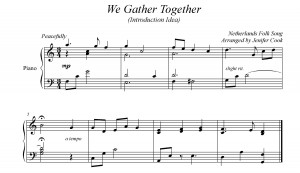
Communication between the sound man and the church pianist or music director is vital.
Every church pianist may not be in the same situation as myself. We have two young men that help out with our music ministry. Our church seems to be the hub for training young musicians and then releasing them into various ministries.
I try to take up the slack and keep open communication between myself and the sound man. Here are several ways I attempt to keep the sound man up-to-date.
Provide him with the following:
*Current Special Music Schedule (gives him advance notice for setting up extra microphones for group specials)
*Program Scripts (with sound cues)
*Periodic conversations with sound man to make sure things are running smoothly
*Practice in advance with sound man with various group specials (instrumental or vocal) to work out microphone settings.
These are only a few suggestions that I thought may be helpful for church pianists; who like myself…are trying to work as a team with the sound crew 🙂
Once again…I understand that not all church pianists are in this type of situation. But, it may make you more aware of the importance of proper sound; reminding you to thank the sound crew or person for their help with this ministry.
It’s so important to keep open communication amongst ourselves in the various ministries of our church…especially the sound crew 🙂



